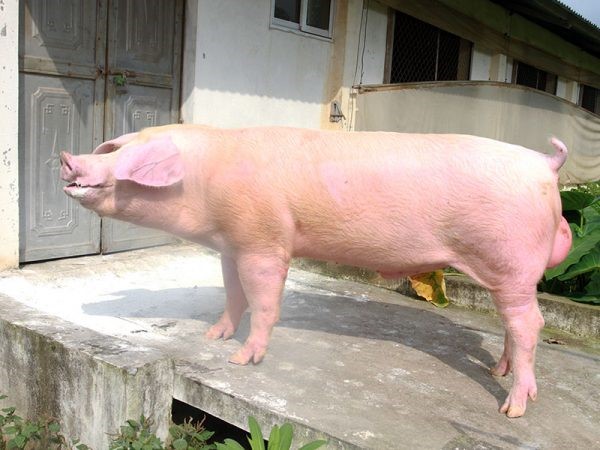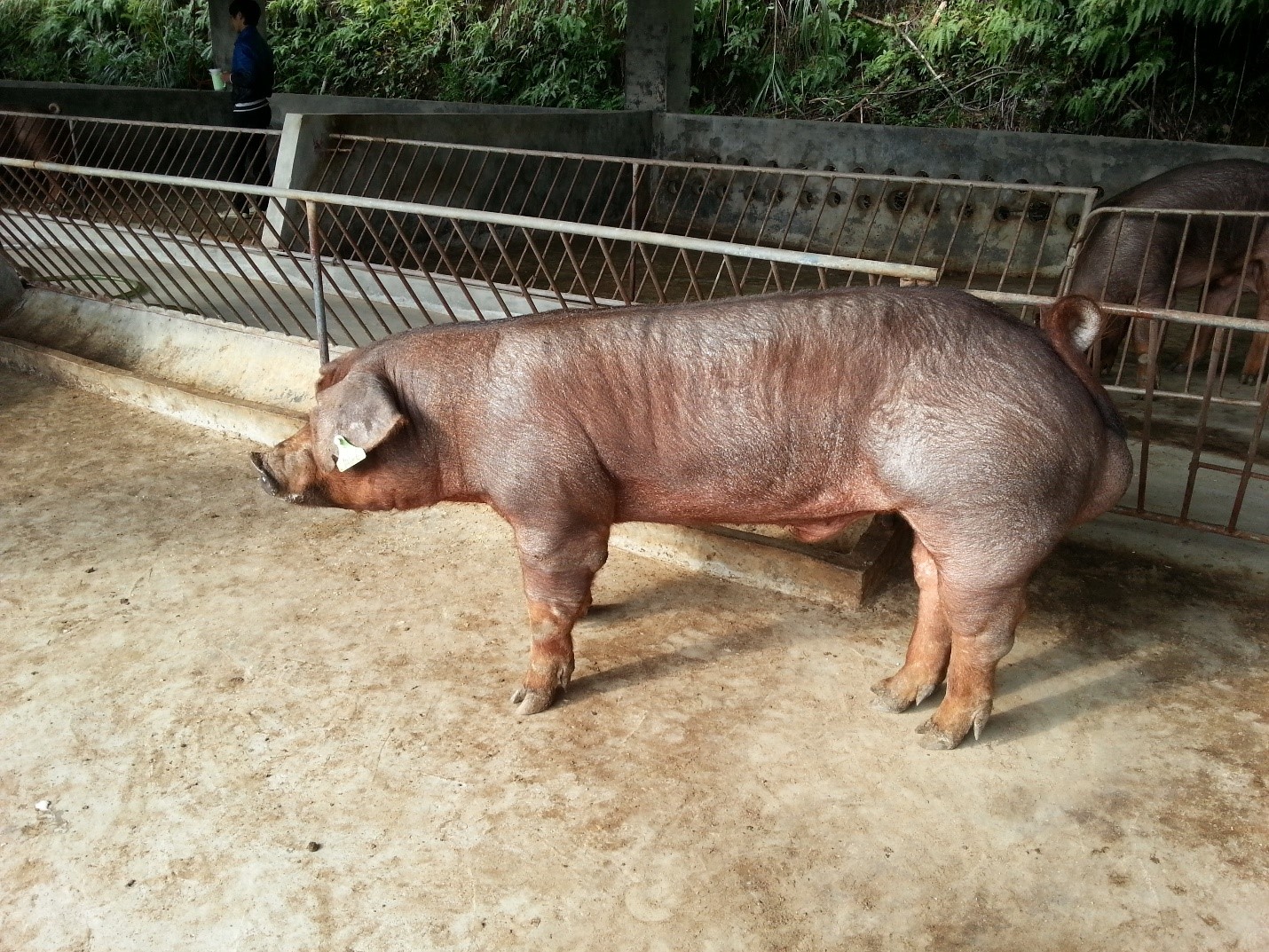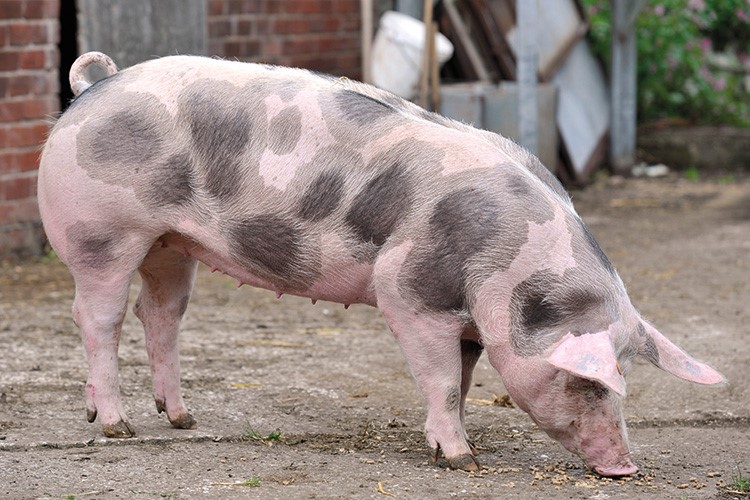In the swine industry, breeding stock plays a crucial role, being the key factor that determines productivity and profitability. Which pig breeds currently rank highest in terms of improving economic efficiency?
1. LANDRACE PIG
The Landrace is a high-yield pig breed originating from Denmark and is now widely raised in many countries. This breed has excellent reproductive capacity, prolificacy, good growth performance, efficient feed conversion, high carcass yield, strong adaptability, and good disease resistance.
Statistics show that within one year, a Landrace sow can produce 1.8 to 2 litters, with each litter ranging from 10–12 piglets.
 Image of Landrace pigs
Image of Landrace pigs
The average birth weight is about 1.2–1.3 kg, and by weaning, piglets reach 12–15 kg. A remarkable feature of Landrace sows is their good lactation ability, producing 5–9 kg of milk per day—sufficient to rear healthy piglets with fast growth.
With a lean meat percentage of 70–80%, Landrace pigs are favored by many farmers. Mature pigs can weigh 250–300 kg. Their meat is tender, fine-textured, and flavorful, bringing high economic returns. This breed is also well-adapted to local conditions in Vietnam.
2. YORKSHIRE PIG
Originating from the United Kingdom, Yorkshire pigs are characterized by pure white skin, long body, small head, straight back, wide chest, and rounded hams. They typically have large forward-facing ears, a strong frame, and a well-balanced body. Yorkshire pigs are among the most widely used breeds in crossbreeding programs worldwide.
Yorkshire sows produce 1.8–2.2 litters per year, with 9–10 piglets per litter. At 150 days of age, pigs reach 80 kg, with a lean meat yield of 55–60%. The meat is tender and flavorful due to fine marbling. Moreover, they exhibit good disease resistance and adaptability. Currently, Yorkshire pigs are also widely farmed in Vietnam due to their high productivity and excellent meat quality.
3. DUROC PIG
The Duroc breed originates from the United States but is now globally popular thanks to its high productivity, high lean percentage, and low fat deposition. Purebred Durocs are easily identified by their reddish-brown coat, black legs, and drooping ears. When crossbred, coat color may vary to light yellow, with black spotting on the thighs, hams, and abdomen.
On average, Duroc sows produce 1.8 litters per year, with 8–9 piglets per litter. At 6 months, pigs weigh 70–80 kg, while adults reach 200–250 kg. Compared to other breeds, Durocs have a lean meat yield of about 65%, with thin backfat (10–12 mm). However, sows have poor lactation ability and relatively weak disease resistance. Therefore, raising Durocs requires high nutritional input and good management to achieve optimal results.

4. PIETRAIN PIG
Pietrain pigs originated in Belgium and are now widely raised in many countries. They are easily recognized by their white-and-black spotted coat. As a typical lean-type pig breed, Pietrains have long bodies, broad backs, well-developed loins and hams, upright ears, and medium-sized heads.
Despite their medium frame, Pietrains have a high lean meat ratio of about 66.7%. Reproductive performance is relatively good, averaging 9–11 piglets per litter, with 1.7–1.8 litters per year. Piglets weigh 1.1–1.2 kg at birth, 15–17 kg at weaning (around 69 days), and reach 100 kg at 6 months.

However, Pietrain pigs are poorly adapted to extreme climates (too hot, cold, or humid) and are highly susceptible to nutritional, reproductive, respiratory, and digestive disorders. For this reason, purebred Pietrains are rarely raised in small-scale farms. Instead, they are mainly used in commercial breeding programs for terminal sires or two-way crossbreeding to improve meat quality and lean yield in other pig breeds. Nevertheless, Pietrains are known for good maternal care and high-quality meat.
5. HAMPSHIRE PIG
Originating from the United Kingdom, the Hampshire breed was exported to the United States around 1825–1835, where it became popular. It has also been introduced and raised in Vietnam. Hampshire pigs are easily identified by their black body with a distinct white belt around the shoulders and forelegs. They have upright ears, a moderately large head, straight snout, slightly arched back, and strong legs. Hampshire pigs are lean-type, known for rapid growth and efficient feed conversion.
However, Hampshire sows are considered less prolific compared to other exotic breeds. On average, they produce 1.8–2 litters per year, with 7–8 piglets per litter. Piglets weigh 1.1–1.2 kg at birth. Sows produce 5–7 kg of milk per day, supporting rapid piglet growth (average daily gain of 750 g).
The above information on the top 5 high-yield pig breeds provides valuable knowledge to help farmers select suitable breeds and optimize pig husbandry practices for higher productivity and efficiency.
